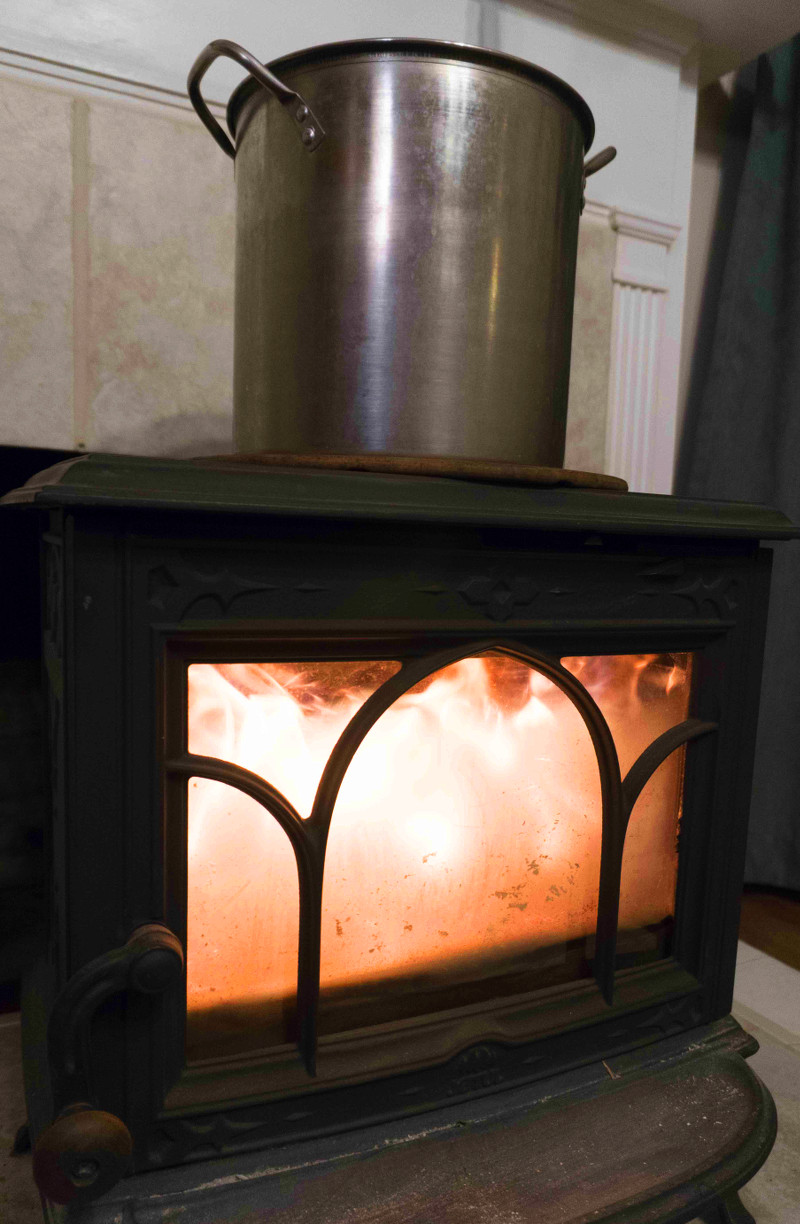
It’s late November and the nighttime chill hangs on a little longer while the daytime sun makes briefer appearances. One of our little homestead’s perks is a small wood-burning stove in the living room fireplace. This time of year, wood stove warmth brings my partner and I closer to the home’s center. Our pets gather ‘round and get cozy as we all spend the twilight hours dozing off with the intoxicating radiant heat. During the winter, home life revolves around the hearth. Our food, comfort, cleanliness and self-care are linked to the offerings of this cast iron centerpiece.
Even though my partner and I love campfires and roughing it in the great outdoors, neither of us grew up with rustic fixtures like this wood stove. Suburbia’s natural gas and electric heat on demand has made us complacent, but we’re trying to change that. We are still learning how to use the hearth the way our grandparents or great-grandparents would have, not just as an alternative to central heat. I’ve begun to see all the small ways that this wood stove simplifies and enriches the time we spend indoors while we do our small homesteading chores.
We both learned from our grandparents the love of breaking beans. Green bean snapping season is over, but dry bean shelling has just begun. We let the warmth of the wood stove finish drying any bean pods that might still contain a little moisture, and then we go into a sort of meditative trance while we shell and sort beans. Admittedly, our favorite Netflix shows or public radio programs also entertain us while we get our bean on. I liken this to the storytelling of the elders as we tend the hearth.
Warm air circulating from a wood stove creates a dehydration force, a perfect opportunity to preserve food without using electricity. The ideas of what to dehydrate are endless, limited only to what we want our house to smell like. Apples, oranges, herbs, onions, garlic—well, the point is just choose wisely. So far we’ve tried only a few cayenne peppers. We grind them up and capture the heat, dipping into the bottled sunshine whenever the skies have been gray too long and our beans taste too bland.
The powerful fire element of a wood stove is balanced by the opposite force of nature, water. To counteract the dryness that comes from burning wood in the stove, I’ve manipulated the fire to rehydrate the home as well. It didn’t take long to realize that hanging our wet laundry near the fire creates a nice sauna effect. I feel very smart about this, like I’ve tricked the fire into serving as a dehydrator and hydrator. The clothes get dry and the air becomes a nice balmy clean-laundry scent. 
We’ve hesitated to cook on the wood stove, fearful of causing a spill that results in rust, but we regularly heat a big pot of water on it. We use a pizza stone under it as a buffer in case of slight dribble and to protect the base of the thin pot. When I encounter any respiratory problems, I drip a few drops of eucalyptus essential oil into the pot and hover above it as the steam penetrates my sinuses. Mulling spices, lavender blossoms and sage are also lovely additions to the pot and contribute their healing qualities to the indoor atmosphere. Throw in some therapeutic salts, and this tiny spa can be just the right treatment for cold-weary, sore muscles or worn-out feet.

Even though my partner and I are city dwellers, we enjoy homesteading as if our urban cottage were actually a cabin in the woods. Our backyard, a small woodsy lot, features a homemade woodshed filled with all the firewood we need for at least one long winter. There are many more fun, simple and ancient uses for the cast iron wood stove, and we look forward to trying them all.




